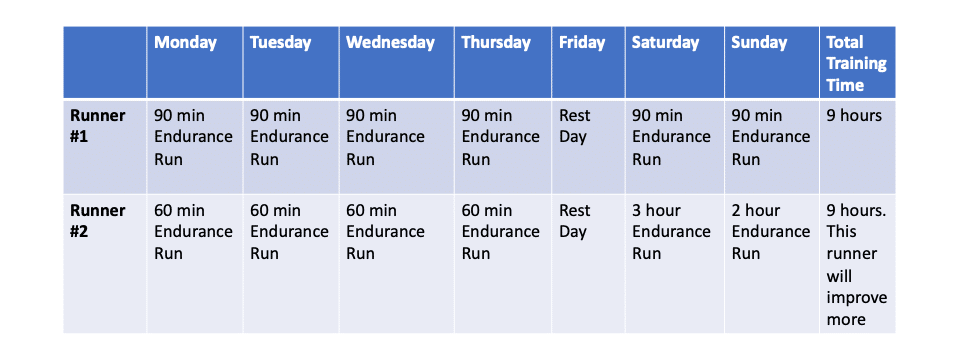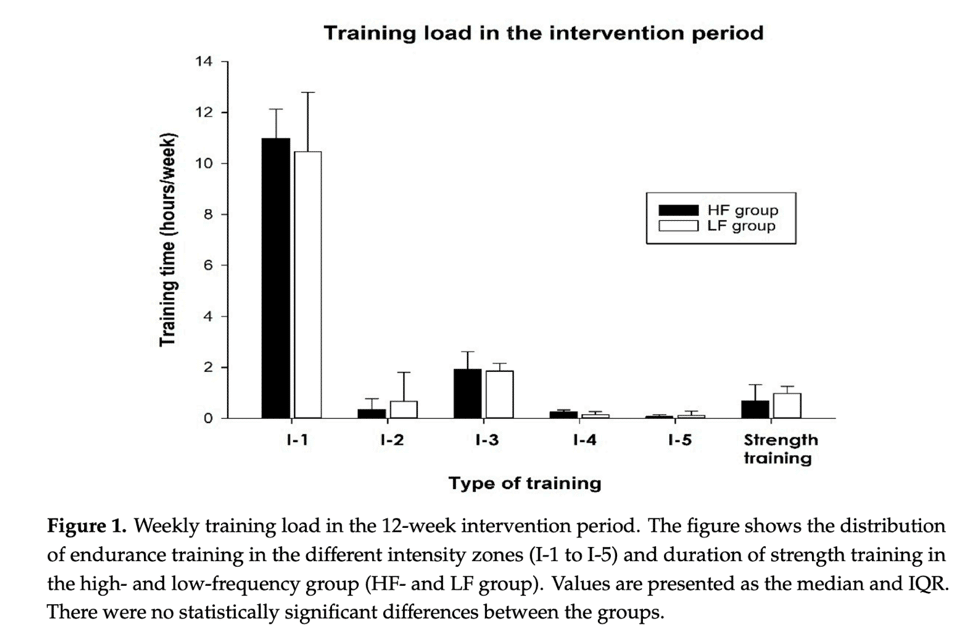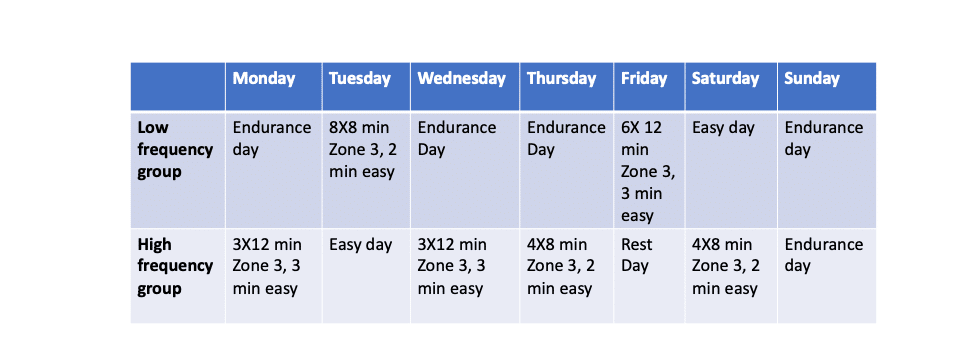
Training Density: What It Is and Why It Matters
By Jason Koop,
Head Coach of CTS Ultrarunning
Let’s face it, very few of you reading this article are professional runners. While we would all love to spend all day and night training, the fact is that most of this readership will have time constraints on their running. Most of the time, those constrains are consistent from week to week and we can easily work around them. However, every so often these constraints go haywire and begin to disrupt training. Maybe your kid’s soccer practice ran a bit long, or you have to spend extra time at work due to a big project. This is why training plans can never really be completely static; adjustments have to be made, and that’s where athletes have all sorts of questions.
As a coach, each and every week I’m making adjustments to athlete’s schedules to meet real life constraints. Some adjustments are easy, like moving a long run to a day where you have more time or pushing back an interval session to the then next day. These changes are easy because you are merely substituting one whole workout for another. Therefore, you get in the exact same workouts, albeit in a different order, over long periods of time as you would have in a more idealistic world.
There are other common situations where the moving and shaking is not so clear cut, like when you have to move half of a workout to another day or are forced into splitting your planned two-hour run into two separate one-hour runs. These types of changes become more problematic because, while you might be preserving the overall volume of training (splitting up a 2 hour run into two 1 hour runs), you are affecting the density of your training (two hours of continuous running vs. two one hour runs separated by 5-8 hours).
Overall volume of training has become a gold standard metric for elite and everyday runners alike, and for good reason. Typically, the more volume you can do over long periods of time, the better runner you will be. However, training volume’s lesser known cousin, training density, should not be forgotten. Runners doing the same overall training volume–yet at different training densities–can achieve markedly different outcomes. For example, if you take a runner who is doing 90-minute runs 6 days per week and compare that to a runner who is doing one 3-hour run, one 2-hour run and four one-hour runs, they are both doing 9 hours per week on 6 days of training. Yet, runner number 2 will have a higher density of training on those 3- and 2-hour days. Both of those athletes could improve, but I would place money on athlete number 2 improving the most.
Research is starting to tease out how important training density actually is. A Norwegian research team recently investigated the effects of training density on national caliber cross country skiers and biathletes (note the paper is free to access, go check it out). Their research design was fairly simple: take a good group of athletes (VO2max > 67 ml/kg/min) and give them the exact same training over a 12-week period, save for one small wrinkle. They spread out the interval work differently between the groups. To facilitate this, the researchers divided the athletes into two groups, a ‘High Frequency Group (HF) and a ‘Low Frequency Group (LF)’.
Each group had interval workouts focused on specific type of intensity termed I-3 or more commonly called Zone 3, which is 82-87% of max heart rate and just below or at lactate threshold. It’s an intensity you could maintain for roughly an hour if you were doing an all-out time trial and would be analogous to a TempoRun as I’ve described here. The High Frequency Group did four interval sessions per week while the Low Frequency Group did the exact same amount of interval work, just concentrated across two sessions. Total time, time at intensity and a trivial amount of other interval work were all controlled such that both groups essentially did the exact same amount of training over the 12 week intervention (see figure below, note they categorized the intensity using a 5-zone system, I-1, I-2, etc).
If you want to visualize what a week of training would have looked like for the two groups of athletes, see the figure below (author’s note- this particular layout was not specifically noted in the research paper and I am taking some reasonable editorial liberty here).
► Free Ultrarunning Training Assessment Quiz
Take our free 2-minute quiz to discover how effective your training is and get recommendations for how you can improve.
Note that each group does the exact same amount of Zone 3 work per week, it’s just that the Low Frequency group does it in more concentrated doses than the High Frequency group.
The results? After the 12-week training intervention, the Low Frequency group improved their time trial results, percent of VO2max at anaerobic threshold and exercise economy. For the Low Frequency Group, that’s a win. Their training intervention likely translates into better performance across an array of endurance situations. Meanwhile, the High Frequency group remained roughly stagnant across all of the measured variables. For the High Frequency group, that’s a lot of hard work (the exact same work as compared to the Low Frequency Group) for no noticeable improvements.
While this is only one single study, it adds to a body of research that indicates that training density matters, even when total volume and volume of a specific intensity remain the same. We also see this in block training studies where hard workouts arranged in a lopsided or back-to-back fashion (i.e ‘blocked’) elicit greater adaptations than the same number of hard workouts spread out evenly over the same timeframe.
Enjoying This Article? Get More Free Running Training Tips
Get our coaches' best training advice, delivered straight to your inbox weekly.
What’s the takeaway?
First off, overall training load and volume of intensity matter. As a coach, I would always prefer an athlete to be able to train more hours per week (up to a reasonable maximum), provided that they remain uninjured, don’t get sick, and the volume does not compromise any interval work. If you decide to do split runs or two-a-days, doing so better result in a higher overall volume than performing a single run. Otherwise, there’s no value-add to the split session. In other words, if you can do a 2-hour run, do it. If you have to split it up, that’s fine, but try to keep as much of the original volume as possible.
I personally use a 75% guideline when athletes have to split workouts. Meaning, when an athlete has to split up a run into two sessions, I try to arrange one session such that it maintains 75% of the original volume. In most cases, I don’t even bother doing the remaining 25%.
The same goes for interval work. There is a minimum time at intensity that is necessary to elicit an adaptation. As the Norwegian research team demonstrated for the High Frequency group of athletes, 32-36 minutes of Z3 intensity per session did not meet this time at intensity standard and thus, no improvements could be realized. Given the fact that these were national caliber athletes, this makes sense. It typically takes >45 min, perhaps upwards of an hour, of time at Zone 3 intensity for an athlete of that caliber to realize any meaningful adaptations (if you want some guidelines on time at intensity that is appropriate for different athletes, see this article).
If you have to reduce the time required to complete a meaningful interval workout, you are best off trying to preserve as much of the original volume of intensity as possible vs. splitting the workout up evenly across two days. Remember, regardless of if you are using a coach, a static training plan or coaching yourself, your workout was designed with intent and purpose. It has a specified amount of volume, intensity, volume of intensity, and volume of recovery. Try to maintain as much as of the original structure and intent as possible when making adjustments.




Comments 2
Pingback: Have You Made These Summer Cycling Training Errors? - CTS
This is a very timely article for me, since I’m aiming to do 100 miles per week for 5 weeks in a virtual challenge. I’ve planned out the mileage for each day but have wondered whether it was better to run, say 15 all at once versus 12 in the morning and 3 at night. I did doubles like that in the first week, but now I’m thinking it’s better to do the day’s mileage in a single run and get the benefit of the extra recovery time. Sounds like there’s a significant training benefit to doing all the miles at once as well.